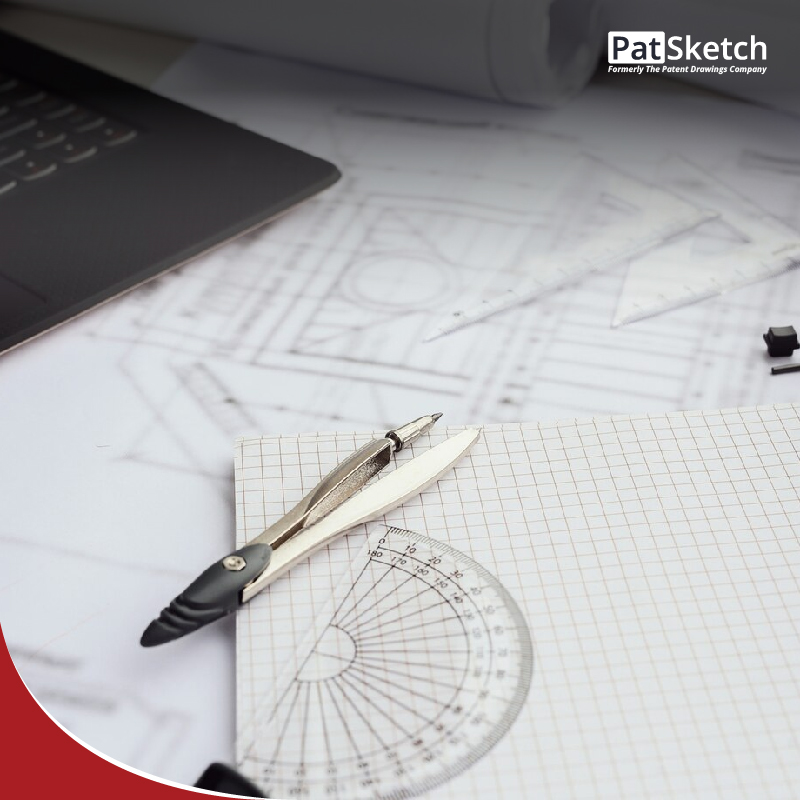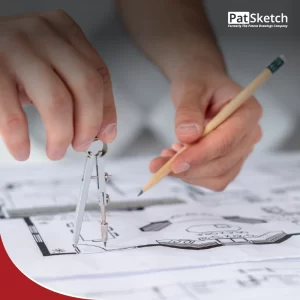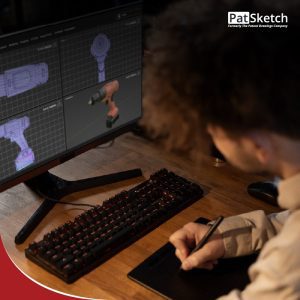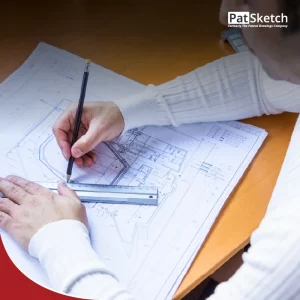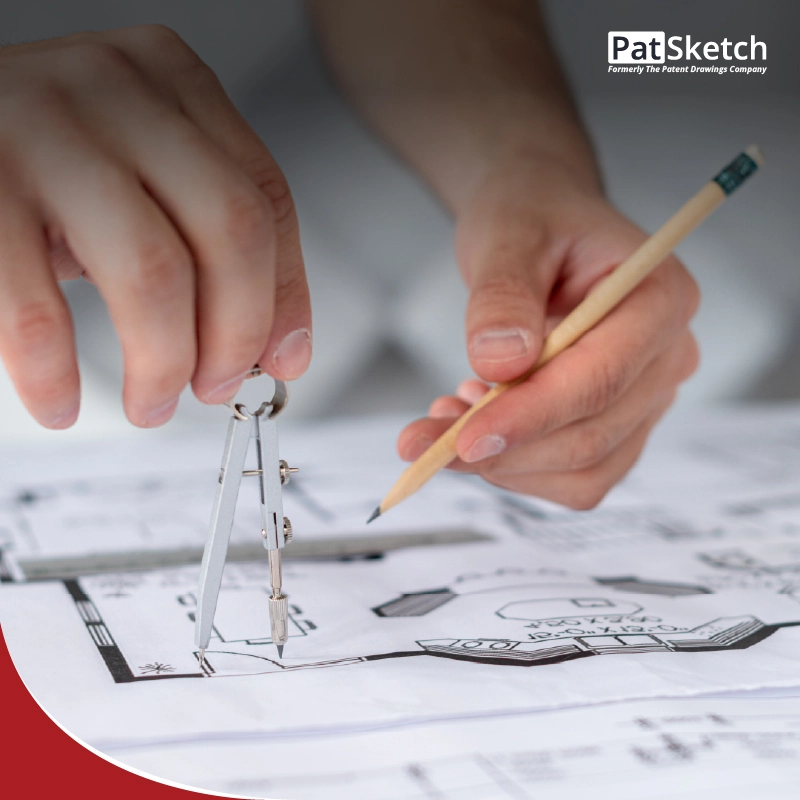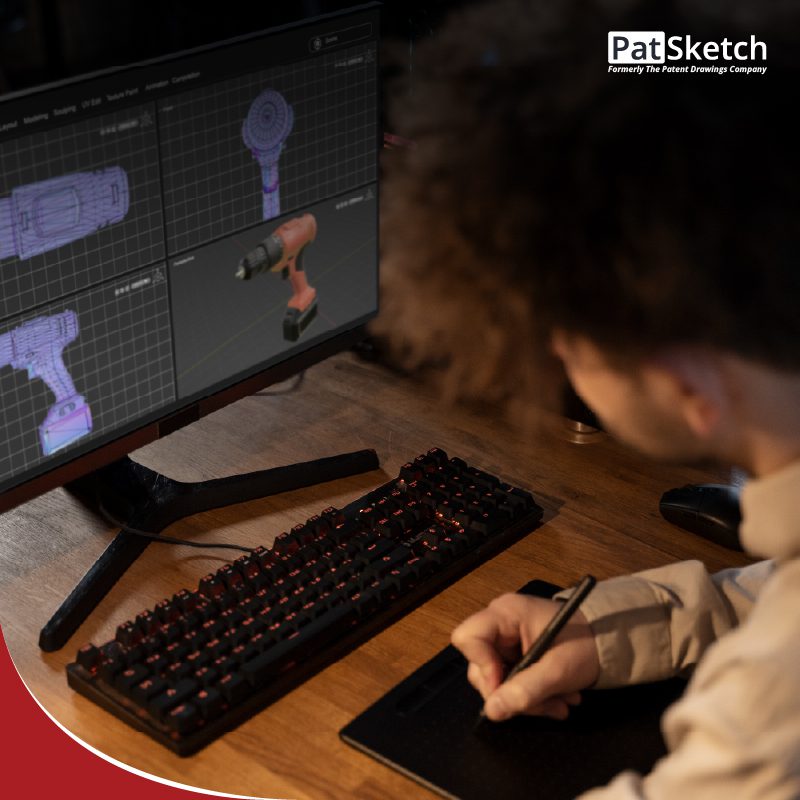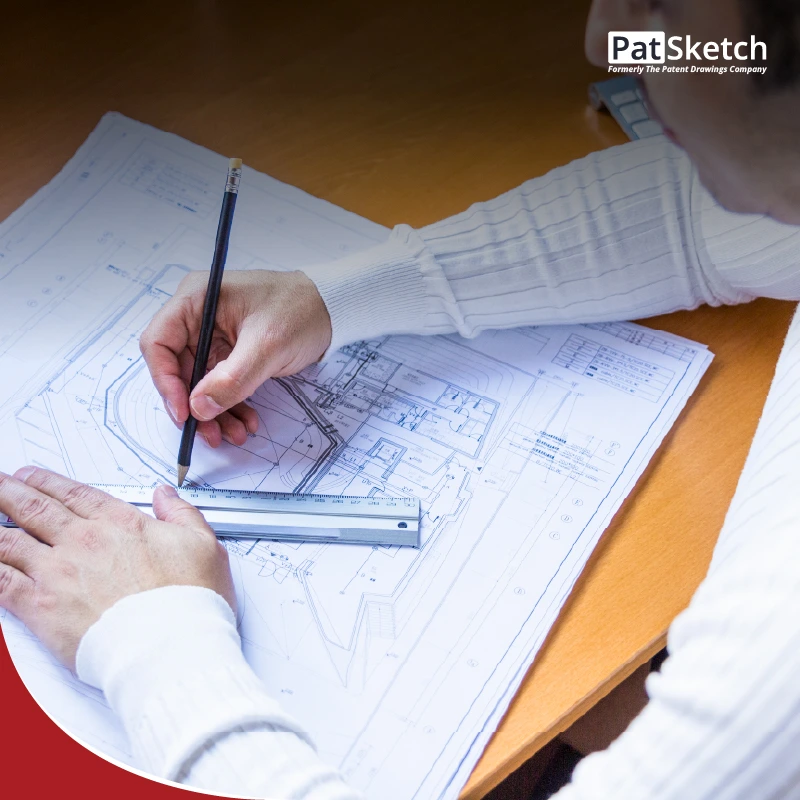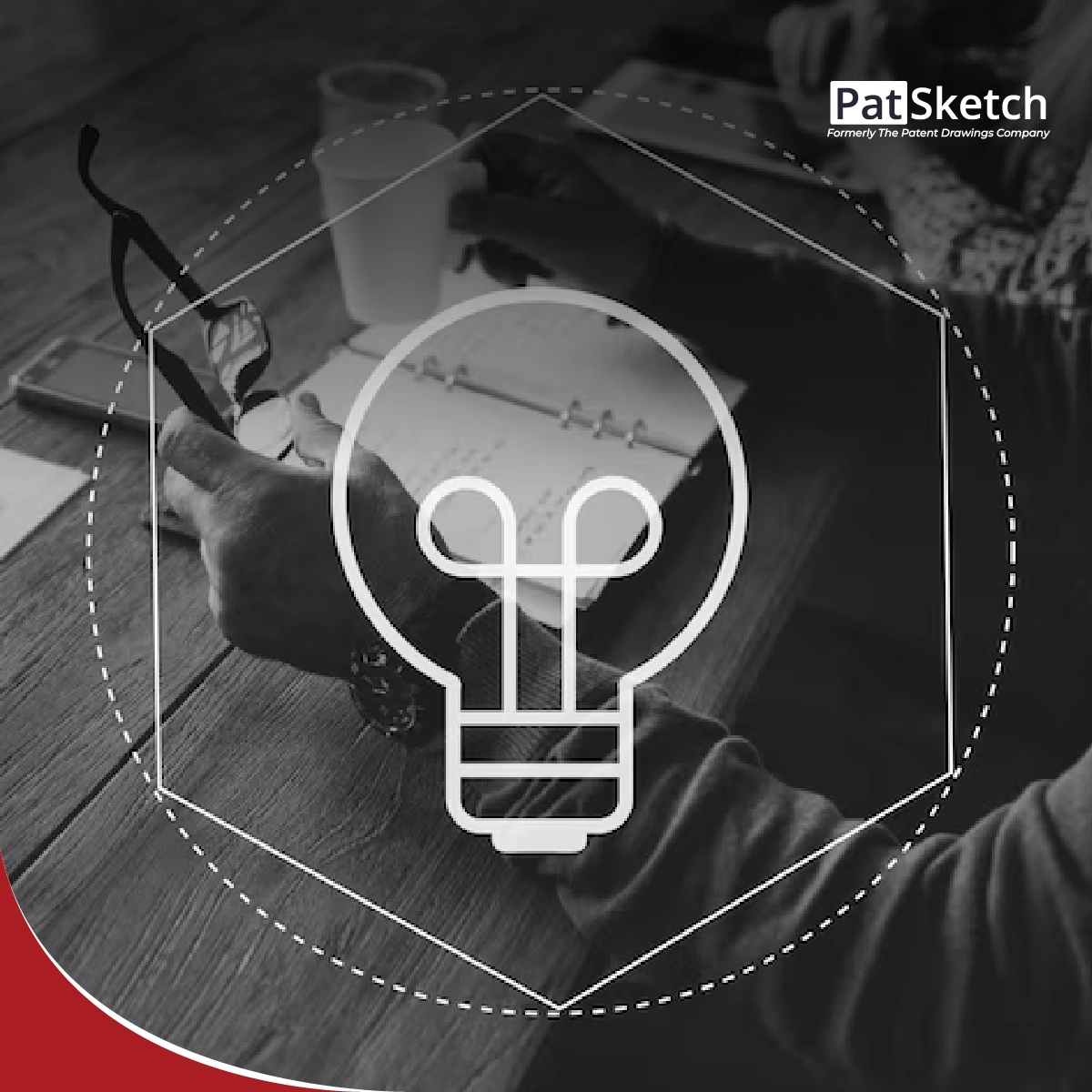Embark on a journey through the captivating world of patent applications, where the art of patent illustrations reigns supreme. These visual aids aren’t just add-ons; they’re essential for a comprehensive understanding of the full potential of your invention. But traversing the intricate landscape of patent drawing requirements isn’t a simple stroll —it’s a strategic voyage across diverse patent applications. In this article, we’ll explore the nuances of patent drawing requirements across different types of patent applications and offer insights into how to navigate them effectively.
Understanding the Essence of Patent Applications
To truly comprehend the significance of patent illustrations, it’s imperative to first grasp the fundamentals of patent applications and their diverse categories. A patent application constitutes a formal submission to a patent office, aiming to secure legal protection for an innovative creation. Typically, it comprises an elaborate exposition of the invention, accompanied by one or more patent claims delineating the extent of protection sought.
There are various types of patent applications, each governed by specific requirements and procedures. These include provisional patent applications, which offer temporary protection for an invention; international patent applications filed under the Patent Cooperation Treaty (PCT), facilitating the process of seeking patent protection across multiple countries; and national phase applications, which are filed in individual countries following the international phase of the PCT process.
These legal documents essentially serve as blueprints for inventions, providing comprehensive descriptions and outlining the scope of protection desired. However, the question arises: what role do patent illustrations play in this complex process? Let’s explore their significance further.
Also Read: Need of Patent Drawings in Patent Application
Types of Patent Applications and Drawing Requirements
The specifications for patent drawings can vary depending on the type of patent application and the jurisdiction in which it is filed. Generally, patent illustrations serve as visual aids that depict the invention clearly and comprehensively. They play a crucial role in helping patent examiners and other stakeholders understand the intricacies of the invention, including its features and functionality. Let’s explore the diverse requirements for patent drawings across different types of patent applications and uncover the secrets to achieving visual clarity and precision.
1. Provisional Application
A provisional patent application serves as an initial, temporary filing option suitable for inventions still undergoing experimentation. Inventors opt for this approach when they need additional time to finalize their inventions. However, several key points should be considered when preparing a provisional application:
- Limited Applicability: Provisional applications are only applicable for utility and plant inventions.
- Timing: Within 12 months of submitting the provisional application, a complete specification must be filed.
- Priority Status: Priority cannot be claimed based on a provisional application.
- Detailed Description: Providing a thorough description is crucial for clearly identifying the invention and its essential components.
- Foreign Filing Information: Applicants must include details regarding the foreign filing of the invention, such as a statement of undertaking and Form 3.
Patent Drawing Requirements for Provisional Applications
While patent office’s typically do not mandate drawings for provisional applications, including them can significantly enhance the clarity of the invention’s description. Visual illustrations are particularly beneficial for mechanical inventions, aiding in better understanding. Although not obligatory, the absence of drawings may prompt the patent controller to request at least one during the prosecution process.
Drawings for provisional applications can be created using various vector-related tools, provided they are clear and understandable. Standard views such as perspective, front, rear, left, right, top, and bottom views are commonly used to depict the invention.
2. Patent Cooperation Treaty (PCT) International Application
The PCT offers a streamlined process for submitting a patent application across more than 150 countries simultaneously through a single application. This method simplifies the procedure by providing a unified approach to safeguarding inventions in nations that are parties to the treaty. When filing a PCT international application, certain requirements must be met:
- Details of the inventor(s) and applicant.
- Description, claims, and drawings.
- Corresponding foreign applications.
Patent Drawing Regulations and Responding to Office Actions (OA)
When it comes to adhering to patent drawing regulations, the use of grayscale photographs is permissible in PCT international applications, depending on their complexity. Following submission, the patent office may issue rejections based on these drawings. In such instances, it is imperative to respond to the office action within two months from the date of mailing, as per OA requirements.
In cases where corrections are necessary, except if the defect lies in the initial request, they must be made by filing a replacement sheet that incorporates the required changes. Accompanying this replacement sheet should be a letter that highlights the discrepancies between the replaced and replacement sheets. The illustrations below offer visual representations of both the original application and the replacement drawing.
Similarly, when submitting replacement drawings to the USPTO, it is essential to include the label “replacement sheet” in the top margins. However, if the drawings are intended solely for the PCT, the “replacement sheet” header should be omitted, as instructed by the examiner’s directive to include a “replacement sheet.”
3. PCT National Phase Application
When pursuing an international application under the PCT with India designated as a target, applicants have the option to initiate a national phase application within India. This must be done within 31 months from either the priority date or the international filing date, whichever occurs earlier. It’s worth noting that this time frame may vary depending on the specific regulations of each member country. Such a patent application necessitates the following details:
- Comprehensive information regarding the applicant, including nationality.
- Full name and address of the inventor.
- A complete specification, encompassing descriptions, claims, and drawings.
- Specifics related to the PCT application, including its number and date.
- A certified copy of priority details and relevant documents.
Details of any modifications made to the specification and any changes during the international phase.
Patent Drawing Requirements and Office Actions
In typical scenarios, responses to patent applications from the patent office are received within a timeframe of 12 to 13 months. If notification is received within the initial 13 months, it usually includes a list detailing points of concern, such as rejections based on unclear or ineligible claims, issues related to obviousness, and concerns regarding patent illustrations.
Common reasons for patent drawing rejections may include lack of novelty or faulty depictions. In some instances, rejections may arise due to hatch patterns utilized in the drawings, especially if they fail to meet the stringent regulations set forth by the USPTO. For instance, improper or absent hatching in sectional views can lead to rejection. Therefore, when incorporating hatch patterns, it’s essential for the patent illustrator to ensure that specific criteria are adhered to. This includes ensuring that hatching doesn’t obscure lead lines or reference characters.
Also Read: Top 3 Design Patent Drawing Errors That Result in Office Actions
Best Practices for Patent Drawing Requirements
Navigating patent illustrations effectively requires careful attention to detail and an understanding of the specific requirements of each jurisdiction. Here are some tips for ensuring compliance with patent drawing requirements:
- Familiarize yourself with the patent drawing guidelines of the relevant patent office.
- Ensure that your patent illustrations accurately depict the features of your invention and comply with any size, format, or resolution requirements.
- Work with experienced patent illustrators or drafting professionals who are familiar with patent drawing requirements and can create high-quality drawings that meet the standards of the patent office.
- Review your patent drawings carefully before submitting them with your patent application to identify any errors or inconsistencies that could potentially lead to objections or rejections.
- Seek guidance from patent professionals or legal advisors if you have any questions or concerns about patent drawing requirements or the patent application process in general.
By following these guidelines and investing time and effort into creating clear, accurate, and compliant patent drawings, you can increase the likelihood of success in obtaining patent protection for your invention.
Conclusion
In conclusion, patent illustrations play a crucial role in the patent application process, providing visual representations of inventions that enhance clarity and understanding. Whether filing a provisional patent application, an international PCT application, or a national phase application, understanding and complying with patent drawing requirements is essential for navigating the patent system effectively. By adhering to the guidelines outlined in this article and seeking professional assistance when needed, inventors can maximize their chances of success in obtaining patent protection for their innovative ideas.
PatSketch offers professional Patent illustration services, trusted by leading firms globally. With over 15 years of experience, we ensure high-quality patent drawings and timely support, backed by ISMS and ISO27001 certifications, we’re dedicated to bringing your inventions to life. For more details about our services, contact us now!
You may also like reading:

